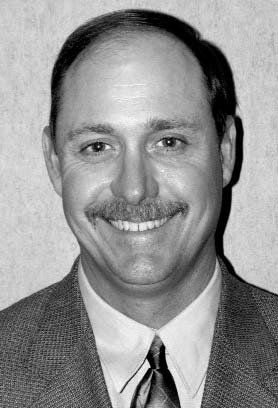A record-setting winter in some parts of the country will mean longer-than usual recovery times this spring for many golf courses and the superintendents who manage them
One sure sign of spring is the return of golfers to their local links. But in many parts of the country, when those golfers tee it up, they are likely to find more than a few reminders of the long, cold winter that just concluded. From parts of the Up-per Midwest to the Northeast and in areas as far south as Texas and the Carolinas, the winter of 2013-2014 was one of the longest, coldest and most severe in memory. And according to golf course superintendents and turf grass researchers who have been monitoring conditions with great concern, golfers getting in their first swings of the season are likely to get an up-close-and-personal look at the damage. “I spoke with a superintendent the other day who has been in his current position for 22 years, and in the industry longer than that, and he thought this was the worst winter since the late1970s, something like 40 years," says Kevin Frank, Ph.D., an associate professor in turf grass science at Michigan State University in East Lansing, Mich. "Winter injury isn't uncommon on golf courses in many parts of the country, but it might normally be just a handful of courses that are affected. This year, it will likely be just a handful that aren’t affected." "At a local superintendent meeting we just had, a climatologist from Michigan State told us that this was the worst winter in 100 years," said Steve Cook, Certified Golf Course Superintendent (CGCS) at Oakland Hills Country Club in Bloomfield Hills, Mich. "It was just so far out of the norm, even for those of us in this part of the country. "So what made this winter so unusual and problematic for golf course turf grass? Primarily, it was the unusual mix of snow, ice and long stretches of below-average temperatures that created the recipe for trouble. And depending on where you were in the country, the impact was felt to varying de-grees. More southern climates may have largely escaped the heavy snow and sub-zero temperatures, but winter still took its toll, most notably when an ice storm felled the famed Eisenhower Treeat Augusta National, site of last week's Masters Tournament. More broadly, golf courses featuring warm-season turf grasses such as Bermuda grass or zoysia grass that were exposed to unusually long periods of near-freezing temperatures may be slow to take shape this spring. In the Upper Midwest and Northeast, that winter recipe created even more significant issues. The most notable troublemaker, according to Frank, was ice that took up residence on golf course turf and refused to leave, choking off oxygen that turf counts on to survive winter. “In some places, there was constant ice cover for a period of 60-70 days. And talking to superintendents, you'll hear a range of depths on that ice cover, anywhere from a half inch upwards to 4 inches. That's something I haven't seen here in my 15 years here." Frank says. “Combine that with the heavy snowfall, and it created a situation that was pret-ty much beyond the control of any turf manager. There just aren't many options when you have that much ice-covered by 2 feet of snow. “What will golfers see once that snow and ice finally gives way to spring in those areas of the country? There will likely be areas of turf grass that simply didn't survive the winter, an occurrence superintendents refer to as winterkill. So bare spots on greens, tees, fairways and in roughs will not be uncommon. Golf courses might also be facing disease pres-sures because of the long winter, most notably snow molds that could be thriving despite the fact that most superintendents preventatively treat their golf course before winter sets in. As spring begins to take a firmer hold, superintendents and their teams will be taking active steps to repair any damage left behind by this unusual winter. In cases where snow mold is pre-sent, spot fungicide treatments can be expected. And golfers can also expect to see plenty of spring seeding of areas im-pacted by winterkill, whether those are bent grass or annual bluegrass greens. “One of the first questions I've been asking superintendents is, 'Do you have enough seed?’ “Frank says. "Bent grass seed is going to be a hot commodity for golf courses this spring. I think golfers can expect to see some temporary greens out there, maybe some greens that are half playable and half roped off until they can get some new growth. That's what superintendents do; they grow grass. So I ex-pect them to get everything in great shape eventually. It just might take a little longer than after a normal winter. “One final tool in helping repair the damage left behind by the brutal winner of 2013-2014, at least according to Cook: Open lines of communications between golfers and superintendents. "I really think one of the most valuable things you can do in situa-tions like this is to just talk to your members, talk to you golfers," Cook says. "Just let them know what is going on with your golf course and what steps you and your team are taking to address any issues," he explained. “I think Trey Rogers with Michigan State said it best - we just need to relax and see what happens. It's going to take some patience by turf grass managers, some babysitting. We'll pull out all the stops, but at the end of the day, it just takes time."
Thursday, May 29, 2014
Subscribe to:
Post Comments (Atom)

No comments:
Post a Comment